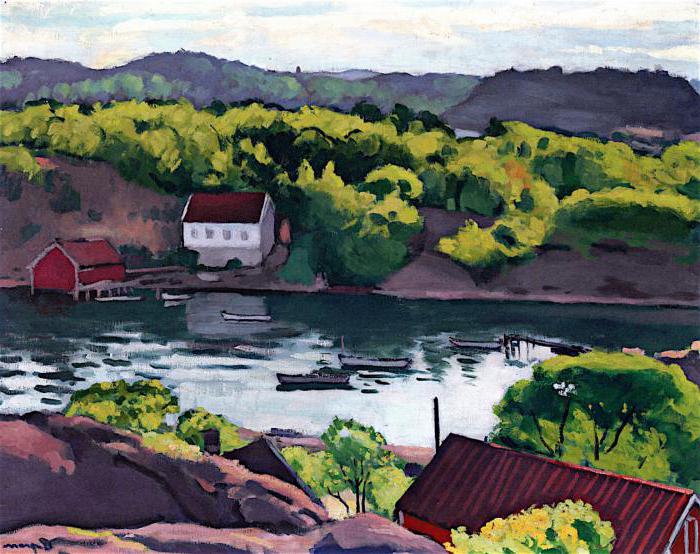French artist Marche Albert managed to create his expressive style in painting. His works were born out of politics, out of events. However, all the work of the master is permeated with lively emotions and feelings of the characters depicted, whether it be a portrait of a person or a city landscape.
years of education
Marche Albert was born in 1875 in the city of Bordeaux (France). When the boy was fifteen years old, he moved with his parents to Paris. The Marche family was not wealthy, but in the capital, my mother was able to open a small business in trade.
In 1890, the future artist began to study at the School of Decorative Arts, and after graduation he entered the School of Fine Arts. On the instructions of his teacher Gustav Moro, he spent a lot of time in the Louvre, copying the works of such famous masters as Lorren, Watteau, Poussin.
During his studies, the guy began friendly relations with Matisse, with whom they will improve their education at the Paris Academy of Ranson. The teacher Paul Serusier diligently invested knowledge and skill in his students. Like his teacher, Marche Albert admired the work of Gauguin and Émile Bernard, but preferred the art of Corot.
Early work
In the late 1890s, almost all of the artist's paintings are portraits and landscapes created in the traditional style of the impressionists. Acquaintance with Van Gogh and Cezanne influenced the young master's painting in delicate poetic shades.
Several years passed, and Marche Albert was already an artist whose manner of performing work corresponded more to Fauvism. In the artist’s work, an unusual presentation of light reflections and the brightness of the colors inherent in this style were clearly visible. This fascination with Fauvism will for a long time affect the manner in which Marche painted. Confirmation of this is his well-known work "Beach in Fekama", written already in 1906. Together with other representatives of Fauvism, Albert exhibited his paintings in the Autumn Salon and in the Salon of Independents.
Paris in the works of Marche
After some time, the artist began to show traits that differ from the style of the Fauvists: the images looked softer, more muted colors were used. Already in February 1907, Marche Albert held his solo exhibition in the Druet Gallery. Most of the canvases exhibited by the master were landscapes of Paris. Wanting to transform life into bright, festive colors, the artist in his works showed the beauties of the city, favorably intertwined with the charms of nature.

Among the paintings that made the painter famous, the most distinguished were “The Sun above the Trees,” “The Embankment in the Greenery,” “Paris. View of the Louvre ”,“ Fair in Le Havre ”,“ Harbor in Menton ”and others. In them, the movement of people and the harmony of nature are combined in a single stream of urban life. Water, sky, stone bridges and embankments, city roofs look on the master’s canvas quite differently from how they can be seen in the works of other artists or in the photo. Albert Marche with his own originality portrayed the enchanting views of Paris. They are permeated by a deep, sensual attitude of a person to his city, nagging immediacy and extraordinary lyrical intonation.
Travel and creativity
Of great importance in the life of Marche was traveling around the world. He visited Germany, Romania, North Africa, Italy, Spain. Each city the artist perceived in a certain color scheme. For example, he saw Paris in gray tones, Algeria in white, Naples in blue, and Hamburg in yellow.
After a stay in Naples, the painter began to create canvases on which he depicted not just the sea, but as if an ideal dream of the sea element. Life in Algeria helped Alber to show on his canvases all the beauty of the scorching sun. Travel contributed to the creation of such paintings as “Port in Honfleur”, “Swan Island. Erble ”,“ View of Sidi Bou Said ”,“ Palm Tree ”.
It was in Algeria that he met his future wife, Marche Alber, whose biography is closely connected with this country. In a happy marriage with Marcel Martine, the artist lived for 26 years.
Marche openly condemned fascism, so during the Second World War, the couple had to move from Paris to Algeria. The artist returned home in 1945, already seriously ill. Several operations underwent for a short while helped him feel better. All this time, Albert did not give up his work, continuing to work on new paintings.
Despite the care of his wife and the intensified fight against the disease, on June 4, 1947, the artist died. He left, but left behind creations full of life and special light.